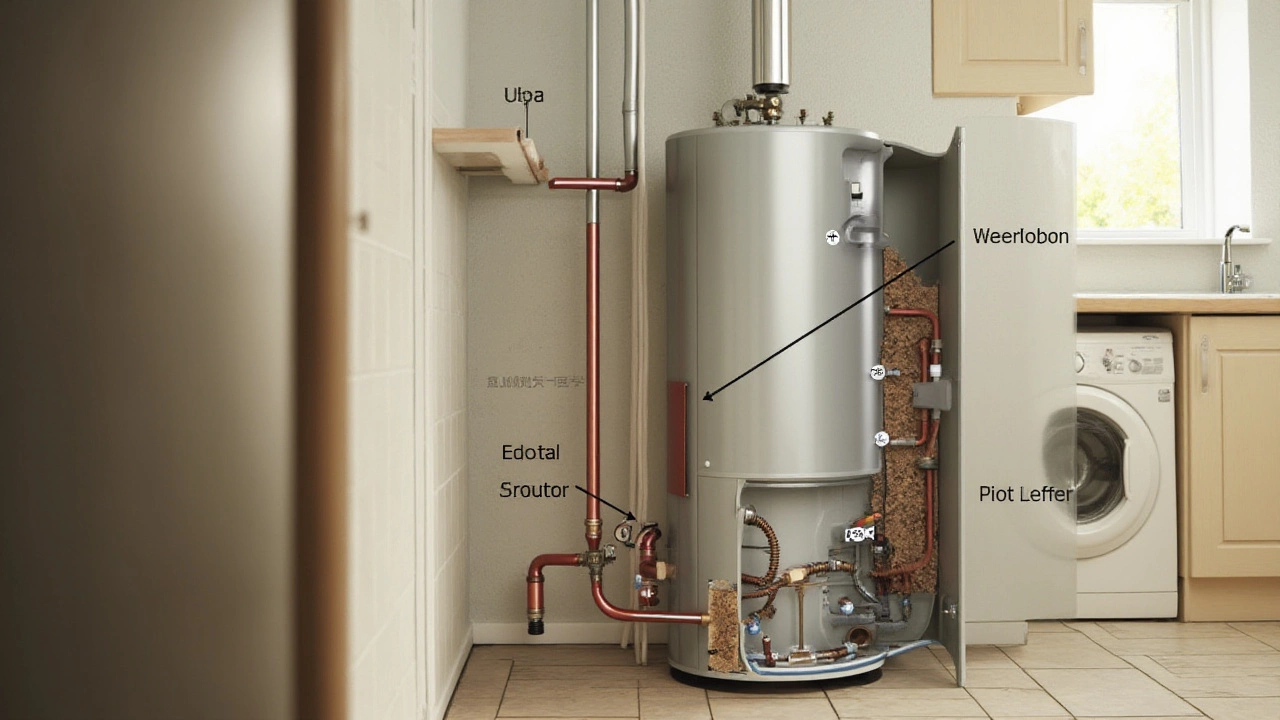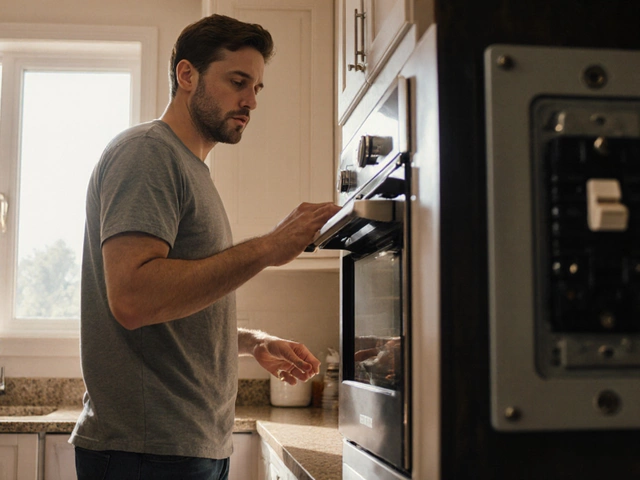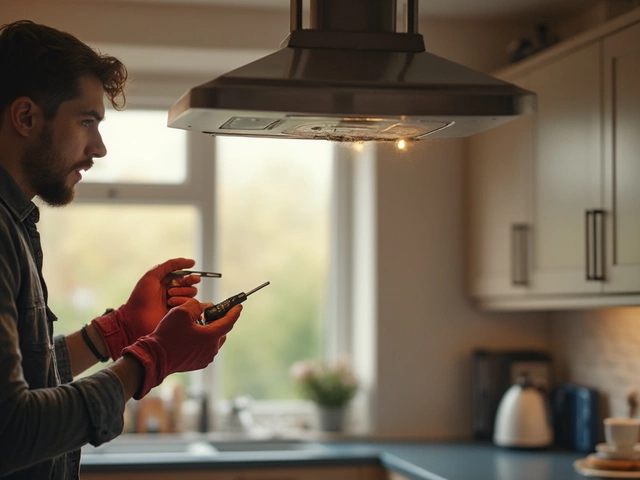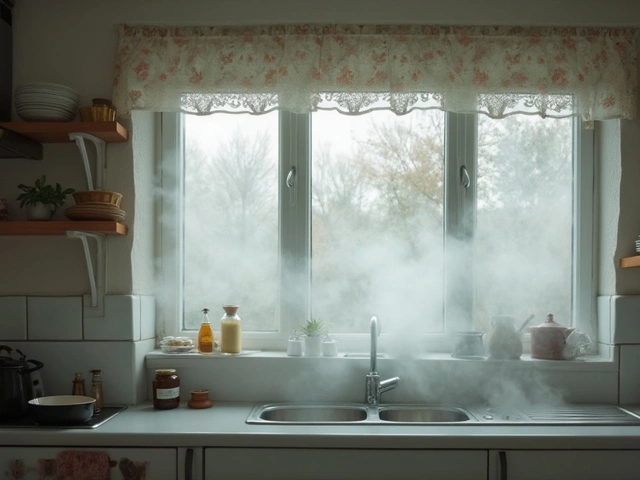It's a chilly morning, and as you step into the shower, you're met with an unwelcome blast of icy water. Your hot water heater has gone on what seems a holiday, leaving you perplexed and shivering. Many homeowners have been there, suddenly faced with a non-cooperative heater and a pressing need for answers.
Hot water heaters are essential parts of our daily routines, yet they often remain neglected until a problem arises. Knowing why these workhorses might stop working can arm you with the knowledge to tackle the issue head-on or help decide when it's time to call in the professionals. Whether it's a minor glitch with the pilot light or a more serious internal problem, understanding the basics can be a life-saver, especially when the thermometer dips.
- Understanding Your Water Heater
- Common Malfunctions and Their Causes
- Pilot Light and Ignition Issues
- Sediment Buildup Troubles
- Thermostat and Heating Element Failures
- Preventive Maintenance Tips
Understanding Your Water Heater
To tackle why your hot water heater might abruptly go cold, it's crucial to first understand what makes it tick. These devices come in different types, such as conventional storage tank models, tankless styles, and even solar-powered versions. Each has its unique mechanics and common problems, but they all serve the same vital purpose—providing heated water efficiently. The most common in households is the tank model, which keeps water hot within an insulated container so it's ready on demand. The tankless version, on the other hand, heats the water directly without storing it, often saving energy and space.
A conventional water heater’s key components include a thermostat to regulate temperature, a heat source such as electricity or gas, and an array of plumbing elements including pipes and safety valves. Understanding these components means recognizing symptoms of failure more readily, helping in quicker diagnostics. Yet, many overlook basic maintenance tasks, a primary reason heaters quit suddenly, neglect that can often lead to sediment accumulation or faulty sensors. It's a bit like caring for a car—recognize the signs early, and you'll save yourself a world of headache later on.
"Maintenance is often the missing link in extending the lifespan of your household appliances," advises Terry McKenna, a home systems expert. "Regular checks can prevent sudden breakdowns and save money in the long run."
Moreover, newer models may include technologically advanced features that require a bit more understanding, like smart thermostats and Wi-Fi-connectivity, adding convenience but also complicating troubleshooting if you're not tech-savvy. Proper knowledge of your system, including where the user manual is and how to reset it in case of minor glitches, empowers you as a homeowner. Don’t ever hesitate to probe a bit if your heater starts to misbehave—it might reveal the process behind the failure and make you more informed for an efficient repair intervention.
Common Malfunctions and Their Causes
Hot water heaters, like any mechanical system, can unexpectedly falter, leading to cold showers that no one appreciates, especially during winter. Several issues can cause a hot water heater to stop functioning correctly. Understanding these problems can help you resolve them more quickly or consult a professional in a more informed way. Many times, people only realize there's a problem when their routine is abruptly interrupted, but knowing the common culprits can prevent the sudden shock of ice-cold water.
One frequent issue is with the pilot light or ignition system. If your water heater uses gas, check if the pilot light has gone out. This small flame meant to ignite the gas burner can be extinguished easily by a draft or a malfunction. If you suspect this is the case, simply relighting it could resolve the problem. Electronic ignition systems in newer models could fail due to a blown fuse or a tripped circuit breaker. Restaurants using similar systems report similar issues, as noted by industry reports.
Apart from ignition woes, sediment buildup at the bottom of your tank is common, especially in areas with hard water. As water is heated, the minerals separate and settle at the base, leading to reduced efficiency and eventually clogging of the water delivery pipe. Over time, this sediment can create a barrier between the burner and the water, reducing heat transfer. It's advisable to flush your tank periodically to avoid this. Many users are surprised to find out just how much sediment can accumulate over just a year.
Electrical elements themselves can fail. This is typically an issue for electric models where one or both heating elements have burned out. Often, a quick check with a multimeter can reveal if electricity is reaching the elements. Skilled DIY enthusiasts might attempt replacements, but improper handling can cause further issues. In certain models, these repairs might not even be cost-effective, hinting at the possibility of a full heater replacement.
Water heater repair can cover thermostat troubles too. Faulty thermostats can misread water temperature, failing to activate heating when needed. You could be dealing with a simple case of a miscalibrated thermostat or something more severe if it’s a chronic issue. Adjusting the thermostat might be straightforward, but persistent problems require professional intervention.
Even the plumbing connection to the heater can lead to problems. A leak or poor flow could be a sign of pipe damage or joint failure. Checking for moisture around the heater’s base can be insightful in diagnosing a leak. For urban folks relying on shared plumbing systems in apartment complexes, this is a frequent but solvable nuisance.

Pilot Light and Ignition Issues
When it comes to why a hot water heater might suddenly decide not to work, one of the main culprits often involves the pilot light and ignition system. These components are indispensable in both gas and electric units for initiating the heating process. Without a properly functioning pilot light, a gas water heater is essentially a large, awkwardly shaped piece of metal that won't do much in terms of warming your water. The function of the pilot light is to ignite the gas burner that heats the tank, so if the light's out, the burner won't fire. Establishing the health and stability of this small flame can sometimes solve the riddle of a water heater that refuses to play ball suddenly.
Numerous factors could snuff out this vital flame. Drafts near the unit, accidental extinguishment, or a defective thermocouple might be at fault. The thermocouple, a safety device located next to the pilot light, senses when the light is on and allows gas to flow to the burner. If it fails, it might wrongly interpret the absence of a flame and shut off gas to the pilot light as a precaution. Contaminants like dirt or rust can cover the thermocouple, impairing its ability to detect the flame properly. Cleaning or realigning this small but crucial part can often restore your heater to its prime.
Troubleshooting Your Pilot Light
Before diving into self-repair, it’s vital to take all necessary precautions. Always ensure your safety by shutting off the water heater power source and gas supply. Once secured, inspect the access area around the pilot light for any visible damage or debris. Manuals specific to your heater model often provide a light guide on cleaning and positioning the thermocouple. If reigniting the pilot light manually, practice patience, as it may take several attempts to sustain the flame.
For a persistent ignition issue beyond a mere light-out, it could indicate a malfunction in the ignition system. Many modern heaters come equipped with advanced electronic ignition systems which remove the need for a constant pilot light. However, if these systems falter, it might require professional assistance.
"A consistent failure in pilot light ignition often points to a deeper gas regulator or control environment issue," explains plumbing expert John Cassetti. If in doubt, professional inspection is advisable, as tampering without expertise might lead to hazardous leaks or gas accumulation.
Remember that regular visual inspections of your heating unit can prevent many minor problems from becoming significant inconveniences. Bergeon Company found that households conducting bi-annual checks had a 40% reduction in unexpected heater failures. So set aside some time to ensure your water heater's pilot light is as reliable as you'd hope for those crisp, frosty mornings when only a hot shower will do.
Sediment Buildup Troubles
One often overlooked yet prevalent issue in hot water heater problems is sediment buildup. Over time, minerals found in water, like calcium and magnesium, tend to accumulate at the bottom of your water heater's tank. This layer thickens gradually, forming a barrier between the water and the heating elements, causing your heater to work overtime for less reward. It's a bit like your heater is wearing a thick sweater in summer—unnecessary and cumbersome.
Not only does sediment buildup reduce the efficiency of your water heater, leading to uneven heating and increased energy bills, but it can also cause some serious noise. Banging or popping sounds are often the cries of your heater struggling with sediment. This isn't just annoying; it's an indicator of a strain on your system. Left unchecked, this can escalate, even leading to potential cracks in the tank or other failures.
To address these unwelcome sediment lodgers, regular maintenance is key. Draining your water heater every six months can significantly reduce sediment buildup. It's a straightforward process: shutting off the unit, attaching a hose to the drain valve, and letting the water out until it runs clear. Repeating this will not only increase the efficiency of your unit but extend its lifespan as well.
Susan Glass, a plumbing expert, notes, "Regular maintenance not only prevents cumbersome issues but can save a household up to 20% on their water heating energy costs annually."
For those in hard water areas, where the water's mineral content is higher, considering a water softening system could be a wise investment. This can help reduce the amount of sediment that enters your water heater, leading to fewer headaches in the long run. Additionally, installing a sediment filter can catch these particles before they make their way into your tank.
Apart from maintenance tips, being aware of your water heater's age is crucial. Most water heaters last between 8 to 12 years. If yours is reaching the end of its lifespan and showing signs of sediment buildup trouble, it may be time to consider a replacement. Keeping an eye on these factors can mean the difference between a cozy warm shower and a rudely chilly surprise.

Thermostat and Heating Element Failures
The thermostat and heating elements in a hot water heater are like the sun and moon of your heating system, each playing a pivotal role in making sure those morning showers stay comfortably warm. The thermostat acts as the brains of the operation, setting and maintaining the desired temperature, while the heating elements do the hard work of warming the water. When either falters, you're left with unwelcome cold showers and rising frustration.
Most electric water heaters have two thermostats and two heating elements. The upper thermostat is the primary sensor, and when it struggles, it cuts off power to the lower element, leading to a drop in water temperature. The thermostats themselves can malfunction due to wear and tear or electrical issues. If the thermostat is not set properly or is defective, it can prevent the heating element from getting the signal to heat the water, leaving you high and dry without the hot water you need. More alarmingly, a faulty thermostat might make the water too hot, posing a risk of scalding.
Heating elements fail frequently as a result of incessant heating cycles or mineral buildup. Hard water can lead to lime scale forming on the elements, which insulates them and causes inefficiency. As the heating element strains to heat the water, it eventually burns out. With heating elements, it's always about timely replacement. It's worth noting that changing a heating element can be a DIY-friendly task if you're comfortable working with electricity, though caution is paramount. Disconnect the power before attempting any fixes.
Monitoring your water heater's temperature regularly can save you from unexpected surprises. The general consensus is to keep the thermostat set around 120 degrees Fahrenheit to balance efficiency and safety, preventing burns and reducing energy waste. A simple multimeter can help check if the heating element is functioning, a task that can demystify whether you've got a problem with your trusty heater.
‘An ounce of prevention is worth a pound of cure,’ said Benjamin Franklin. His words ring true, especially with appliances like water heaters that serve us daily without fanfare.
Regular inspections of the hot water heater might seem hassle-filled, but they're essential in diagnosing issues before they escalate. An established plumber, for a small fee, can ensure every part is running smoothly, catching potential thermostat and heating element failures before they inconvenience you. In an era where everything run like clockwork, an unnoticed malfunction can snowball into a substantial inconvenience.
Now, if you notice water is too cold or too hot more frequently, don't ignore it. Test the thermostat, and if it appears faulty, consider replacing it with a model known for better precision and reliability. In modern models, digital thermostats often provide more accuracy and efficiency than their analog predecessors. Remember, timely checks and occasional professional oversight are the best ways to ensure your hot water heater stays in top condition, offering dependable warmth exactly when you need it.
Preventive Maintenance Tips
Preventive maintenance is the golden key to ensuring your hot water heater runs smoothly year-round. Many homeowners overlook basic upkeep, often leading to avoidable issues. Regular maintenance not only prolongs the life of your unit but also ensures efficient energy use, saving you a bundle in the long run. One fundamental aspect is to set a schedule for checking your water heater's components every few months. During these checkups, you can identify minor issues before they escalate into significant problems. Cleaning and inspecting are two of the most critical tasks that play a huge role in preventing unexpected breakdowns and ensuring continuous service.
Starting with sediment control, most heaters accumulate sediment at the tank's bottom, especially in areas with hard water. This can lead to reduced efficiency and even damage to the tank if left unchecked. To mitigate this, it is advisable to flush your water heater annually. This process involves draining the tank using the drain valve at the bottom and allowing fresh water to rinse it out. For those concerned with doing it independently, various tutorials online provide step-by-step guidance, though hiring a professional is always a wise choice if doubt persists about the task complexity. Notably, the act of flushing can improve not only the action of heating but prevent other heat transferring components from unnecessary wear.
Another crucial maintenance aspect involves monitoring the thermostat and the heating elements of your unit. Adjust the thermostat to a safe but efficient temperature, usually around 120 degrees Fahrenheit. Lowering the temperature reduces the risk of scalding and can significantly cut energy bills, according to energy.gov's studies on water heating expenses. Inspect heating elements for any wear and tear, as these are critical parts of the system responsible for actually making the water hot. In electric water heaters, a malfunctioning element is a frequent culprit of performance issues.
"Routine maintenance checks not only ensure proper function but enhance the longevity of your appliance," recent studies have emphasized at the American Society of Plumbers.
Additionally, consider installing an insulation blanket around the tank, which can help maintain temperature and reduce energy consumption. An insulated tank lessens the amount of time the unit needs to cycle on to maintain the desired temperature. For those with older units, insulation will provide noticeable efficiency improvements. Make sure the pipes leading from the tank are also insulated, as this will further enhance the unit's performance.
Lastly, regularly check the unit for leaks or signs of wear on any visible pipes and the exterior of the tank. It's also wise to test the pressure relief valve occasionally. This small but mighty component is crucial for safety, releasing excess pressure if the tank becomes too hot. To test, simply lift the valve's lever to ensure it opens and closes properly, allowing for water flow. Consistent vigilance via small acts of maintenance can elongate the lifespan and utility of your water heater, allowing you not just to save money but make routine cold-shock experiences a thing of the past.







